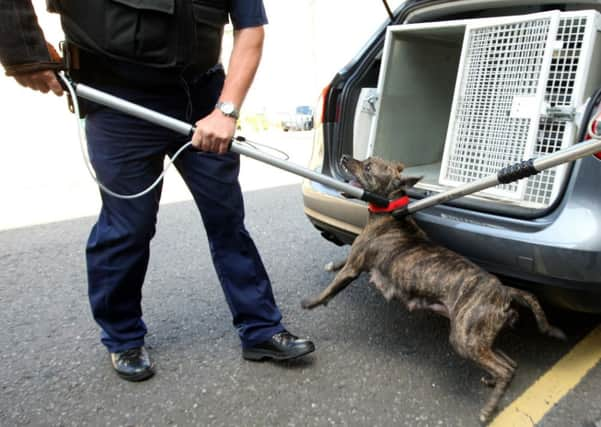Huge rise in rate of danger dogs held by Yorkshire police


West Yorkshire Police took 253 dangerous dogs off the streets in 2014 to be held in kennels while their owners go through the courts, compared to 145 the previous year and just 89 in 2011.
The extra capacity was introduced by the force last year after the Dangerous Dogs Act was amended to cover offences on private property. Previously a dog could only be seized if it was dangerously out of control in public.
Advertisement
Hide AdAdvertisement
Hide AdBut police say numbers of dangerous dogs seized have been increasing since 2007 due to an increased awareness of the problem sparked by high-profile dog attack tragedies.
These include the case of five-year-old Ellie Lawrenson, killed by a pitbull in 2007 after her grandmother let the dog into her house in St Helens.
West Yorkshire recently introduced 20 new kennels at its privately-run base in an undisclosed location in the county, increasing its total from 50 to 70.
Dangerous dogs seized by police are kept at the kennels until the court cases involving their owners are over. In many cases the dogs are returned with restrictions such as the dog being muzzled or kept on a lead.
Advertisement
Hide AdAdvertisement
Hide AdSergeant Stewart Dunderdale of West Yorkshire Police’s Dog Section, said: “We treat all reports involving dogs behaving in a dangerous manner extremely seriously.
“Over recent years we have seen an increase in the amount of dogs we are seizing. This is in part down to new legislation meaning owners can now be prosecuted if their dog attacks someone on private as well as public land.
“There is also an increased understanding amongst the general public of issues around dangerous dogs following a number of high-profile incidents that have been featured prominently in the media.”
In July, a Leeds man whose pregnant partner was killed by their two pit bull-type dogs walked free from court.
Advertisement
Hide AdAdvertisement
Hide AdMother-of-four Emma Bennett, 27, died after she was attacked at her home in Leeds in December 2013. Lee Horner admitted owning dogs prohibited by the Dangerous Dogs Act. He was given a community order and told to do 280 hours of unpaid work.
South Yorkshire Police has 389 incidents in its records where ‘dangerous dog’ was mentioned last year, the highest total in at least eight years. The amount spent by the force on kennelling dogs has also risen every year and in 2012-13 totalled £202,403.
Humberside Police, which saw 61 ‘dangerous dog crimes’ last year compared with 28 in 2013, now has four ‘dog legislation officers’ ensuring people comply with the law.
One of the officers, Dave Jenkins, said his force deals with more dog bite incidents than calls about illegal breeds, but that reports of both are on the rise.
Advertisement
Hide AdAdvertisement
Hide AdHe said: “The types of dog people own are changing, there are more cross-breed dogs, more bull breeds. They tend towards the husky type, Akitas and varieties like that, which are not ideal house dogs.
“Years ago if your pet bit a child at home there was no offence, it was considered one of those accidents. Now the legislation has allocated responsibility.
“As a snapshot, we had eight dog bite cases in January, and five were in the first seven days.”
Since a change in the law last May meant owners can be prosecuted for attacks on private property, West Yorkshire Police has recorded a total of 169 dangerous dog offences in total.
Advertisement
Hide AdAdvertisement
Hide AdOf these, the only incident involving a ‘private place’ occurred on 22 May on South Road, Cullingworth, Bingley, when two girls aged six and four were attacked by an Akita-type dog at a neighbour’s property.
They sustained bite injuries to their arms, legs, back, neck and head and needed hospital treatment.
According to police: “With the agreement of the complainant’s mother and the owner of the dog the animal was destroyed shortly after the incident.”
Changes last year to the Dangerous Dog Act also made it an offence for a dog to attack a guide dog or hearing dog. The maximum sentence for allowing a dog to attack someone was increased from two to 15 years for a fatal injury and up to three years if a guide dog is attacked.
Advertisement
Hide AdAdvertisement
Hide AdFurther changes coming into effect next month mean a dog can be returned to its owner before court proceedings are complete, if it is neutered, microchipped and insured.
Under existing laws, it is illegal to own a Pit Bull Terrier, Japanese Tosa, Dogo Argentino and Fila Braziliero, though individual dogs can be exempted if they are considered not to be dangerous.